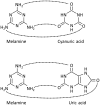Environmental toxin-induced acute kidney injury
- PMID: 29225803
- PMCID: PMC5716161
- DOI: 10.1093/ckj/sfx062
Environmental toxin-induced acute kidney injury
Abstract
Human beings are exposed to various potentially toxic agents and conditions in their natural and occupational environments. The kidney, due to its concentrating ability and excretory function, is highly vulnerable to the effects of environmental toxins. Identifying the precise cause and mechanisms of environmentally induced renal injury remains a challenge for which various scientific disciplines need to be involved. Investigations in this field are confronted with the apparent infinite types of toxins, their mutual interaction, handling/metabolization by the body, ways of exposure, etc. Although interdisciplinary efforts and persistence are required to identify, mechanistically unravel and tackle environmental toxin-induced pathologies, research eventually pays off in ameliorated working/living conditions and development of preventive/therapeutic strategies. This review was compiled to particularly emphasize the need for a maintained awareness of environmental threats in general and those targeting the kidney. Different mechanisms of renal toxicity are illustrated and discussed, thereby focusing on three types of environmental toxins, namely aristolochic acid, melamine and heavy metals.
Keywords: aristolochic acid; heavy metals; melamine; nephropathy.
Figures




References
-
- Soderland P, Lovekar S, Weiner DE. et al. Chronic kidney disease associated with environmental toxins and exposures. Adv Chronic Kidney Dis 2010; 17: 254–264 - PubMed
-
- Depierreux M, Van DB, Vanden Houte K. et al. Pathologic aspects of a newly described nephropathy related to the prolonged use of Chinese herbs. Am J Kidney Dis 1994; 24: 172–180 - PubMed
-
- Vanhaelen M, Vanhaelen-Fastre R, But P. et al. Identification of aristolochic acid in Chinese herbs. Lancet 1994; 343: 174 - PubMed
-
- Vanherweghem JL, Depierreux M, Tielemans C. et al. Rapidly progressive interstitial renal fibrosis in young women: association with slimming regimen including Chinese herbs. Lancet 1993; 341: 387–391 - PubMed
-
- Cosyns JP, Jadoul M, Squifflet JP. et al. Urothelial malignancy in nephropathy due to Chinese herbs. Lancet 1994; 344: 188 - PubMed
Publication types
LinkOut - more resources
Full Text Sources
Other Literature Sources

